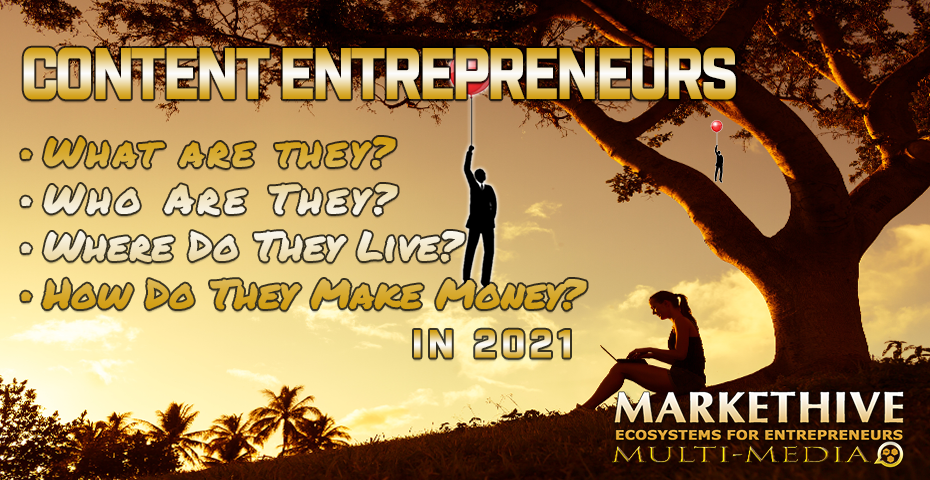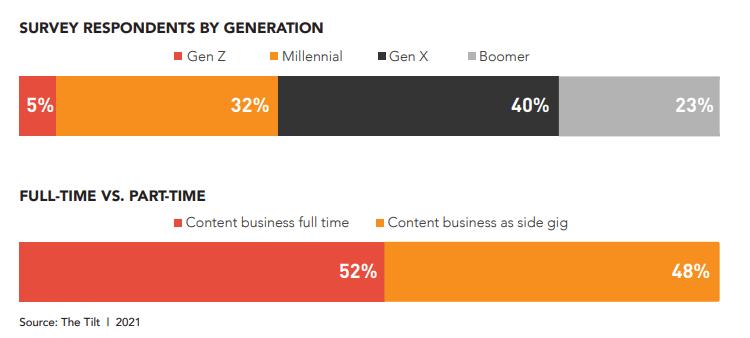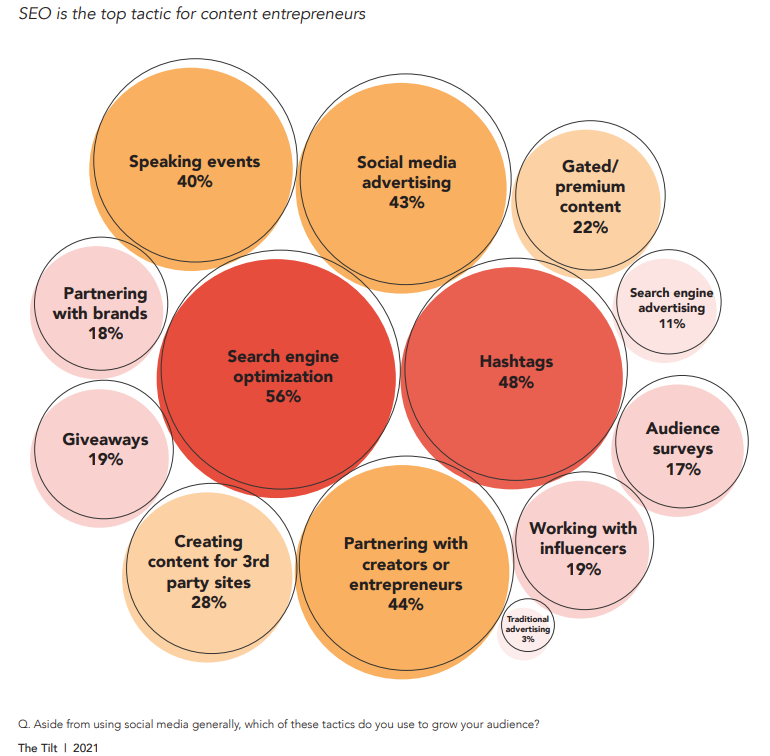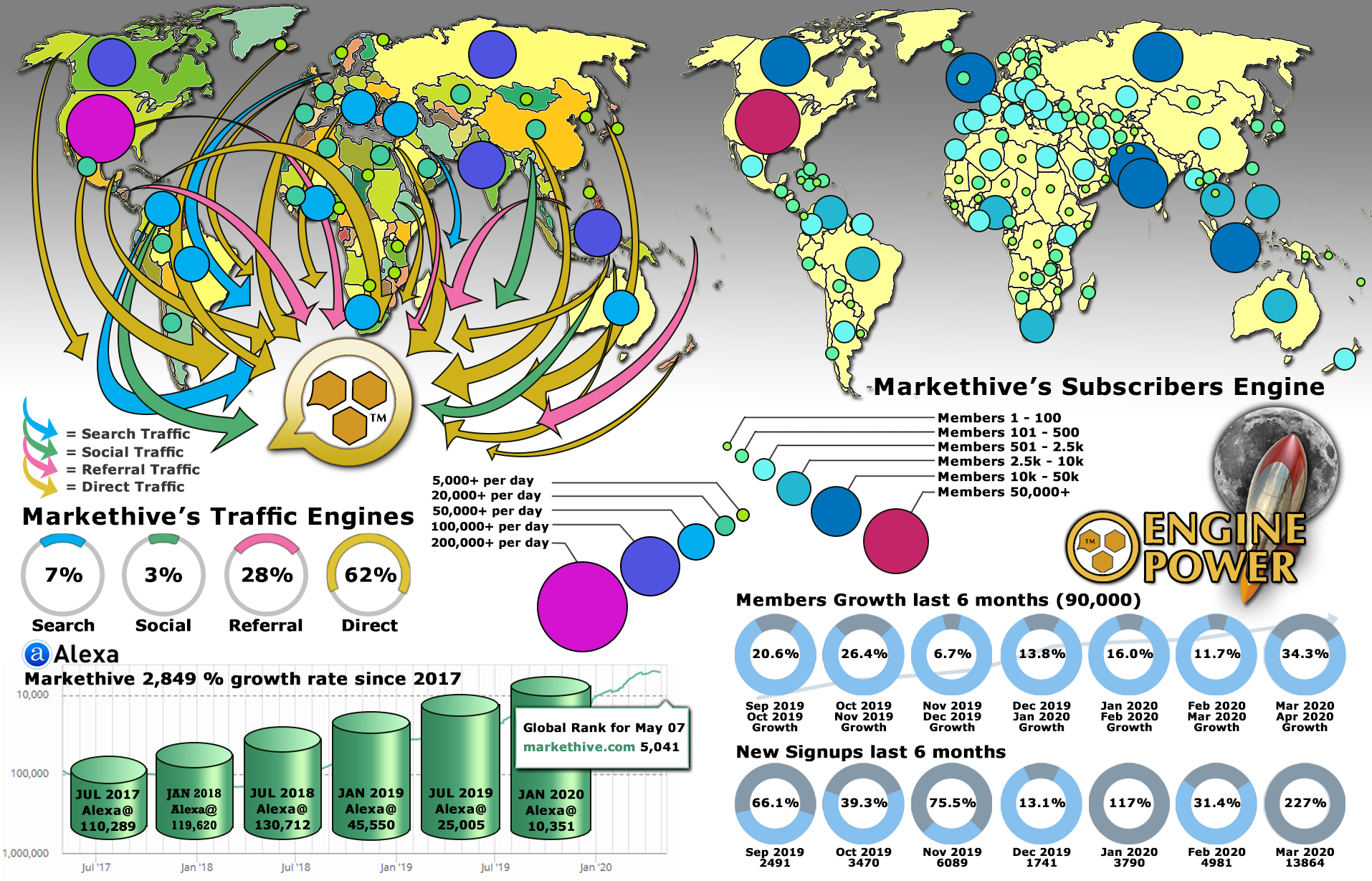What Are Content Entrepreneurs In 2021?

Who Are They? Where Do They Live? How Do They Make Money?
Do you remember what was happening on the internet at the turn of the century? Cast your mind back to the Dot.Com era when web blogging first became a thing. Initially named Weblog, it was a new avenue for many writers, aspiring or seasoned, that had opened up. The internet was hungry for content, and many who grasped the opportunity could mark their territory, gather a significant audience, and monetize their creative work—a virtual land of opportunity for anyone connected to the internet.
These days, some would argue that the blogging gold rush has all but dried up in terms of monetization or even generating an audience. Given the enormous amount of content accessible today, it would seem much more difficult to reach a level of success as a prominent, self-sustaining writer in any niche.
But the truth is, in today's climate, the art of the wordsmith has never been more critical, particularly in digital business and marketing. The art of writers and content creators puts ideas and information of any business into consumers’ eyes, ears, and hands. Without the nuances of this art, the best products and services won’t stand out, be discovered, or connect with the right customers and clients.

Succeeding as a content entrepreneur takes time, patience, and a business mindset. The advantage of a platform with the technology and a community that supports the artists and their right to express themselves and facilitates the monetization aspect is a great place to start for aspiring content creators, B2C and B2B bloggers.
Online business owners must be aware that failure to adjust to new trends will impede the likelihood of consumers ever seeing their content, resulting in loss of business or even collapse. What we see now is a rise of content entrepreneurs, culminating their art with a hybrid of creativity, strategy, and technology. Combining strategic, artistic vision with existing and emerging technologies helps people turn fleeting interactions into genuine connections.
Food For Thought
If you’re a nervous newbie in the content marketing space and think that everything has already been said or written about, just perform your own research and add your point of view. Writing content that changes the world exists in the world, not in your mind.
In the words of Brian Clark,
“The way you become a writer, and eventually a great writer, is to write. If the desire to write isn’t there, you’re going to have to learn to work well with creative writers to execute on your strategic vision.”
A good rule of thumb for when you’re choosing one of your many ideas to write about is; If it has even the slightest possibility of helping someone, give it a try.

I came across a recent study conducted by The Tilt. It’s the first of its kind regarding content entrepreneurs and looks at what defines them, how they grow their audience and monetize content, and what it takes to be successful. These people do not “hustle”; instead, they are serious entrepreneurs building niche audiences—a group of serious business owners who have found a new way to build a business.
What Are Content Entrepreneurs?
The Tilt quoted that content entrepreneurs (CEs) make money by turning valuable and interesting content into revenue streams. Some are solopreneurs making a comfortable income based on sharing their unique expertise with a niche audience. Others are powering high-growth content ventures that employ many. All are part of a new movement of professionals pursuing work on their own terms.
Content entrepreneurs span all age groups, industries, and channels, not just the viral young influencers on Tik Tok, which seems to be the stereotype. For the most part, a CEs success isn't based on a viral hit or a massive audience. Founder of The Tilt, and facilitator of the research, Joe Pulizzi, cites. “Just don’t call them influencers; content entrepreneurs are building businesses.”
Content entrepreneurs are the people driving the creator economy. Yet, few truly understand them.
Content entrepreneurs have a singular focus: growing their audience by filling a particular informational need. And by doing this well, they can “monetize” that audience. They are building something akin to a media company.
A Unique Group Of People
With over 1400 entrepreneurs surveyed, the research concluded that CEs fully supporting themselves are most likely Gen X or Boomers. The split between full-time and part-time was roughly 50:50. Younger entrepreneurs were more likely to treat content creation as a side gig.

Full-time CEs are significantly more likely to be financially successful with a median investment of $10,000, and 75% are funding their content businesses with personal savings. Very few seek capital from venture capitalists or angel investors.
Most content entrepreneurs use no single revenue tactic for monetization; the most common are advertising and sponsored content, membership fees, online courses, events, and speaking fees. Revenue is derived from a combination of these monetization channels and, more recently, cryptocurrency rewards by blockchain-driven platforms like;
- Markethive: An inbound marketing, social media hybrid, and broadcasting digital media platform for entrepreneurs – Content, B2B and B2C.
- Steemit: A blogging platform where writers are rewarded with upvotes by readers in the Steemit community.
- The Tilt: An education, training, and news platform for content entrepreneurs.
For those who operate their content business full time, the survey found that the median annual revenue was $50K. Experience is a factor in achieving higher income. The median revenue for content entrepreneurs in business four to seven years was $100K, while those in it for longer than seven years saw a median revenue of $125K.
How Do CEs Grow Their Audience?
Search engine optimization (SEO) is the only audience-growth tactic cited by more than half (56%) of the content entrepreneurs. Hashtags came in second, cited by 48%. Partnerships with creators or entrepreneurs came in third (44%), followed closely by social media advertising (43%).

Freedom And Independence – The Top Motivator
The assumption that content entrepreneurs turn a hobby into a business and pursue their passion while working does describe some. However, the overwhelming consensus of 86% of solopreneurs and 89% of micropreneurs is that CEs seek independence as the priority and can control their careers. They want to work on their terms at a time and place they determine.
Almost nine out of ten of all content entrepreneurs agree they became content entrepreneurs “to achieve financial freedom on my own terms.” They are abandoning the traditional pathways to success and building an entirely new model for professional work.

Content entrepreneurs are fierce independents, discarding the traditional college education in favor of on-the-job training. 85% of respondents believe a college degree is not required to succeed as a CE. 95% say they can operate their content business anywhere that has reliable internet.
The study also revealed that Covid-19 generated a new cohort of content entrepreneurs. More than half (54%) of those who launched their business in the last year was influenced by the pandemic.
Next Level Independence
The survey revealed a lack of awareness and appreciation among the respondents regarding issues that could thwart long-term content business success, like deplatforming and losing their audience. Many content entrepreneurs are relying on third-party platforms; the recent survey indicated that they use Facebook (76%), Instagram (66%), LinkedIn (60%), Twitter (51%), and YouTube (47%).
The above platforms mediate the relationship between creator and consumer and control at least some of the content entrepreneur’s business. Since these tech giants are for-profit businesses, their goal is to make money for their owners, not the creators. They can change the rules any time they want to make a more profitable business regardless of the impact on creators. They can even use insights from the CE’s audience to develop competing products and services.
A new breed of CEs is eliminating or reducing the intermediary relationship with these platforms, finding ways to reach their audience directly rather than relying on third-party channels and ad revenues. They’re taking “independence” to the next level.
As Amanda McLoughlin, creator and chief executive of the podcast collective Multitude, explains,
“Audiences are powerful, and creators don’t need anyone’s permission to build one of their own or to ask them for support. As media companies continue to consolidate, our relationship with our audience and the autonomy of owning our work are more valuable than ever.”
To view the full report, download the PDF here.

Markethive – Giving CEs Back Their Freedom And Autonomy On One Comprehensive Platform
One platform that has addressed the issues of deplatforming and lack of control or autonomy over an entrepreneur’s livelihood is Markethive. A blockchain-driven ecosystem for entrepreneurs allows individuals to own their work autonomously and generate a substantial income without intermediaries.
It’s like having your own site with the advantages of Storefronts with POS shopping carts and access to the analytics and insights from your audience and customers. As a Markethive Entrepreneur, you are not beholden to the whims and rule changes of large social and tech platforms (e.g., algorithm changes, arbitrary blocking, and withholding of data).
CEs at Markethive can leverage new monetization strategies and emerging opportunities such as digital media aggregation and curation, the press release, and sponsored article platform that offer more control and much healthier margins.
Markethive has a built-in social media interface where you already have an engaged, interested audience and target market. The Blog Subscribe, and blogcasting feature that remotely broadcasts out to all other social media is a great way to expand your audience and increase reach. The unique combined news feed interface currently in development will make it that much more compelling.
Markethive has two engines (subscriber and traffic) driving it and simultaneously bringing millions of entrepreneurs into this safe haven, the central hub, and gateway to the internet universe. Alexa and WorthOfWeb measure both the subscriber and traffic engines’ speed and power, and in the case of Markethive, they are growing daily in an exponential fashion.

With its two major engines at the helm and secondary engines such as the Hivecoin and exchange and all cottage businesses within Markethive, reaching out to all other platforms is fundamentally the core; the epicenter where we all work in collaboration, ensuring everyone’s success.
According to The Tilt, CEs are the most powerful engine fueling growth and change within the creator economy movement, and they’ve only just begun. Markethive nurtures the content entrepreneur and delivers a ‘state of the art platform’ to you, but it is your company.
Markethive has been built for the community and brings self-sovereignty, privacy, autonomy to every individual with a genuine opportunity to be in control of your future, peace of mind, fulfilling your potential, creating wealth, and being able to prosper in so many ways. Markethive is its name; Entrepreneurialism is its game.
Are You a Content Entrepreneur?


